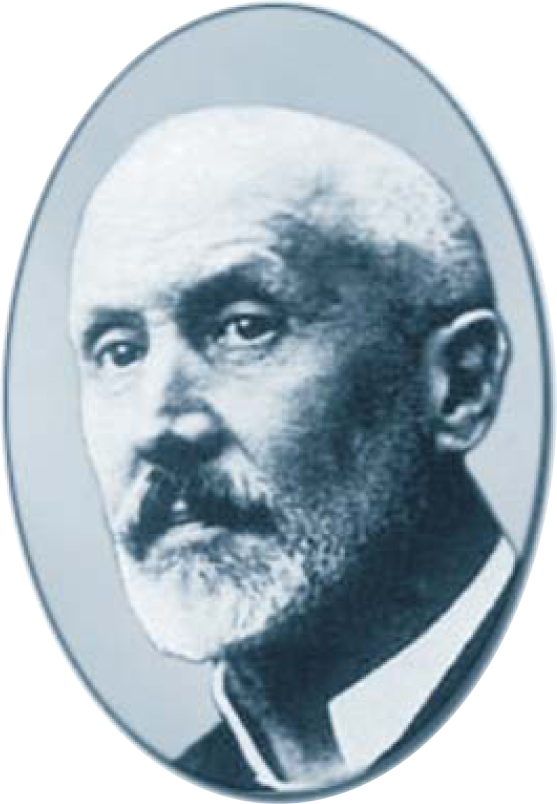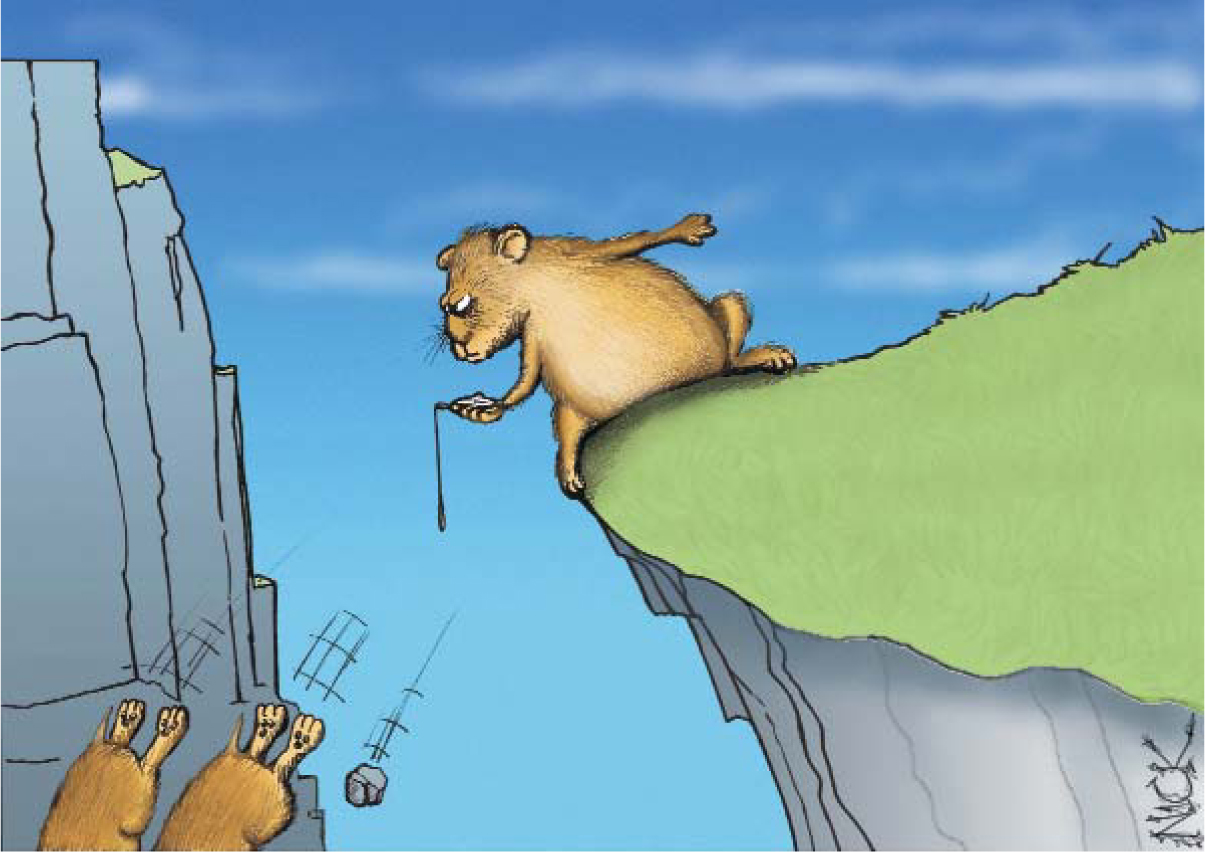A fifth force farce
DOI: 10.1063/1.3001868
When I was a young assistant professor at Yale University in 1986, a great deal of interest was aroused by a paper that had appeared in Physical Review Letters (E. Fischbach et al., Phys. Rev. Lett. 56 , 3, 1986 http://dx.doi.org/10.1103/PhysRevLett.56.3
Having written papers using data from ongoing experiments, I was acutely aware of how difficult and dangerous it is for someone not involved in an experiment to select anomalous data for significance, even if the experiment is contemporaneous, much less almost a century old. I decided to respond by writing a spoof piece and submitting it to PRL and then seeing what would happen. Writing the piece was great fun, and I got several good lines from colleagues.
That’s not to say the paper by Fischbach and colleagues wasn’t a serious analysis. It was, pointing out that the Newtonian gravity theory had not been tested at scales of tens to hundreds of meters. And it led to a number of experiments to perform such tests. Indeed, with the recent interest in modifications to Newtonian gravity due to large extra dimensions, experiments testing the classic theory are still under way.
About a week after I submitted the spoof, when I had heard nothing, my department chair and friend, Tom Appelquist, suddenly got very worried that PRL might actually publish it! Something much better happened, however. In a response that forever raised my opinion about the editorial process at PRL, I got back six referee “reports,” clearly done in-house but typed on different typewriters—in the words of editor George Basbas, “one [report] for each force.” The reports were a brilliant and self-effacing parody on PRL’s reputation for using its three requirements to make it difficult for reasonable papers to get published there and also on the common experience of getting referees’ reports that are inconsistent with each other but nevertheless come to the same conclusions.
I had sent out the paper using the normal preprint mailing methods, and it got some notoriety in the community. Indeed, I first got to know Murray Gell-Mann because he remembered my name from the preprint when we first met. Numerous people have asked over the years what happened to the paper. So, as a tribute to PRL on its 50th anniversary, here it is, essentially unchanged.
On Evidence for a Third Force in the Two New Sciences: A Reanalysis of Experiments by Galilei and Salviati
Abstract: We have carefully reexamined the experiments described by Salviati on the acceleration of objects at the Earth’s surface and find evidence for the existence of a new force. An archival search indicates that this result is supported by earlier work of Aristotle.
Submitted to: Physical Review Letters (and the New York Times)
Submitted to: Physical Review Letters (and the New York Times)
It is commonly assumed that the work of Galileo Galilei and collaborators 1 established the basis for the Newtonian theory of universal gravitation, later refined by Einstein. However, we note here that a careful examination of their published results indicates a potential anomaly, which could represent evidence for a new self-coupling resulting in a velocity-dependent force for baryonic matter. Confirmation of this result could help explain earlier anomalous results reported by Aristotle. 2 It is possible that other anomalous results 3–5 may also be explained in terms of this new effect.
In the absence of relativistic effects, and other external nongravitational perturbations, Einstein’s theory predicts a coupling of the form
The experiments of Salviati et al. are reported to have involved in one instance observation of acceleration at the Earth’s surface over a distance of 12 cubits. 1 Based on information obtained by us, 6 we estimate this to be approximately 8 meters. The experiments were performed using “a very round polished bronze ball” of undetermined alloy content and size, and a wooden channel, lined with parchment. Since no lubrication was reported, we may assume a coefficient of kinetic friction in the region 0.07–0.1. We will also assume a drag coefficient of 8 × 10−5 Ns/m, appropriate for a ball of radius 1 m in air at room temperature.

Roland von Eötvös (1848–1919) used a torsion balance to accurately measure the equivalence between gravitational and inertial mass to one part in 10

The results of interest involved observation of distances traversed in consecutive time intervals as the bronze ball rolled down the wooden channel. As reported by Salviati
1
the ratios of these distances were given by the ratio of consecutive odd integers. It was also reported that no two measurements disagreed by more than
For experiments of the type described by the authors, several other effective forces in addition to that described in equation (
The first effect that could alter the result from the quoted one expected for a constant force is the fact that the actual gravitational potential over the length of the 8 meter channel is slowly varying, as given in
The drag force of air on the ball is however both relatively large, and time varying. For small inclinations we expect ν final in the range of 2–3 meters per second, implying a drag force in the range of 2 × 10−4 newtons. For inclinations of 10°–20°, the gravitational force is about 1 newton for a 1 kg ball. Thus the expected deviation in acceleration from top to bottom of the channel is about
We interpret this result as suggestive of the presence of a new velocity-dependent force which operates on a distance scale of meters which can counteract the effects of the drag force described above. Such an intermediate-range force may in fact have escaped detection in experiments testing Newtonian gravity and its subsequent revisions, although it is not clear to us why the space shuttle is not affected upon reentry. This latter concern might justify a wide range of new experiments performable by NASA. 8
Spurred on by this, we have made an exhaustive search of the literature to see if this effect has been previously measured. Such a force seems to have been measured earlier by Aristotle,
2
who observed a velocity dependent force resulting in changes in acceleration of order
The agreement between equations (
We have also discovered evidence in the work of Galilei and Salviati, and the earlier work of Aristotle, for variations in acceleration at the Earth’s surface depending on composition of the material used. We do not consider this here, however, since the later results of Eötvös et al. 10 demonstrate convincingly with great accuracy that there is no such effect.
While a repeat of the experiments of Galilei et al. with better sensitivity may be possible with modern techniques, we have not performed such an experiment. While such an effort was being considered, recent results 11 led to it being abandoned. In the meantime, however, Monte-Carlo studies of this effect in a unified gauge field theory are being carried out by A. Chodos et al. 12 Also, R. Shankar 13 is presently reanalyzing several of Einstein’s gedanken experiments. We are hopeful that in the near future some new results will appear.
Since this velocity-dependent force appears to have first appeared in the work of Galilei and Aristotle, we suggest that if our analysis is confirmed by later work, the force should be entitled the “third” force, since it was discovered before the strong and weak interactions, and after gravitation and magnetism. We personally find this possibility extremely exciting.

Fluffy, the “Galileo of the Lemmings,” with his stopwatch.


We are indebted to our colleagues at Yale University for their valuable suggestions and support and forebearance throughout this work, and particularly to Tom Appelquist, who occasionally seemed to agree with some of what is said here.
References
1. Galileo Galilei,Dialogues Concerning the Two New Sciences, 1638 (translated by H. Crew and A. de Salvio, Dover edition, 1914).
2. Aristotle, Physics, The Works of Aristotle, translated into English, vol. 2, W. D. Ross, ed., Oxford U. Press, New York, 1930.
3. UA1 Collaboration, see for example, G. Arnison et al., Phys. Lett. B 139, 115 (1984).https://doi.org/10.1016/0370-2693(84)90046-7
4. GSI heavy ion collision data, see for example T. Cowen et al., Phys. Rev. Lett. 54, 1761 (1985).https://doi.org/PRLTAO
10.1103/PhysRevLett.54.1761 5. The zeta particle, reference unavailable at present time (Jan. 22, 1986, 8:30 AM).
6. Thanks to the intermediation of high-ranking officials from certain Italian banks, Vatican archival material was made available to us.
7. The actual analysis was limited due to exhaustion.
8. See L. Krauss, NASA grant proposal, to appear.
9. We are not sure at this time of exactly what.
10. R. Eötvös, D. Pékar, E. Fekete, Ann. Phys. (Leipzig) 68, 11 (1922).https://doi.org/ANPYA2
11. See Gramm and Rudman, Congressional Record.
12. See A. Chodos, J. Rabin, Yale Theory Preprint YPT 83-41 (April 1983), and other work.
13. To be unpublished.
More about the Authors
Lawrence Krauss is Foundation Professor in the school of Earth and space exploration, the physics department, and Beyond: Center for Fundamental Concepts in Science, and is director of the Origins Initiative, all at Arizona State University.
Lawrence M. Krauss. Arizona State University, US .
